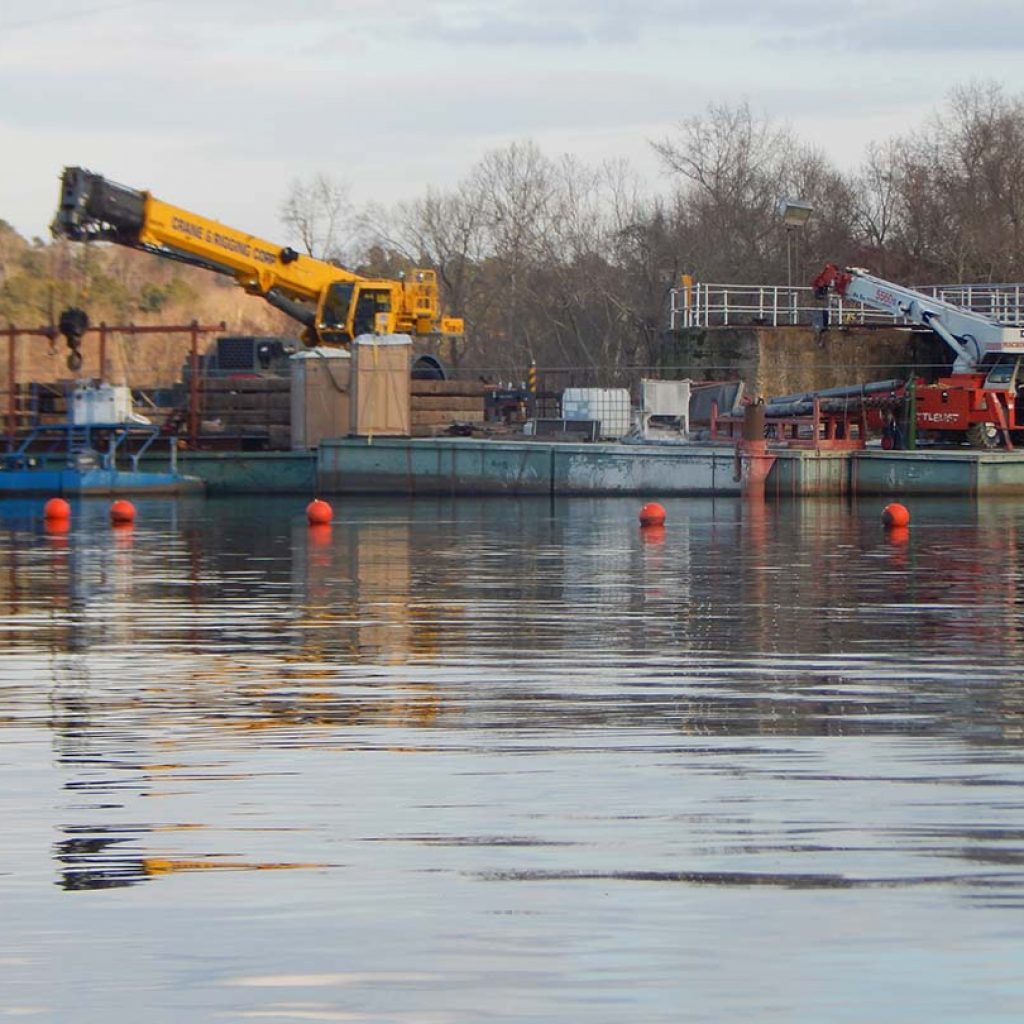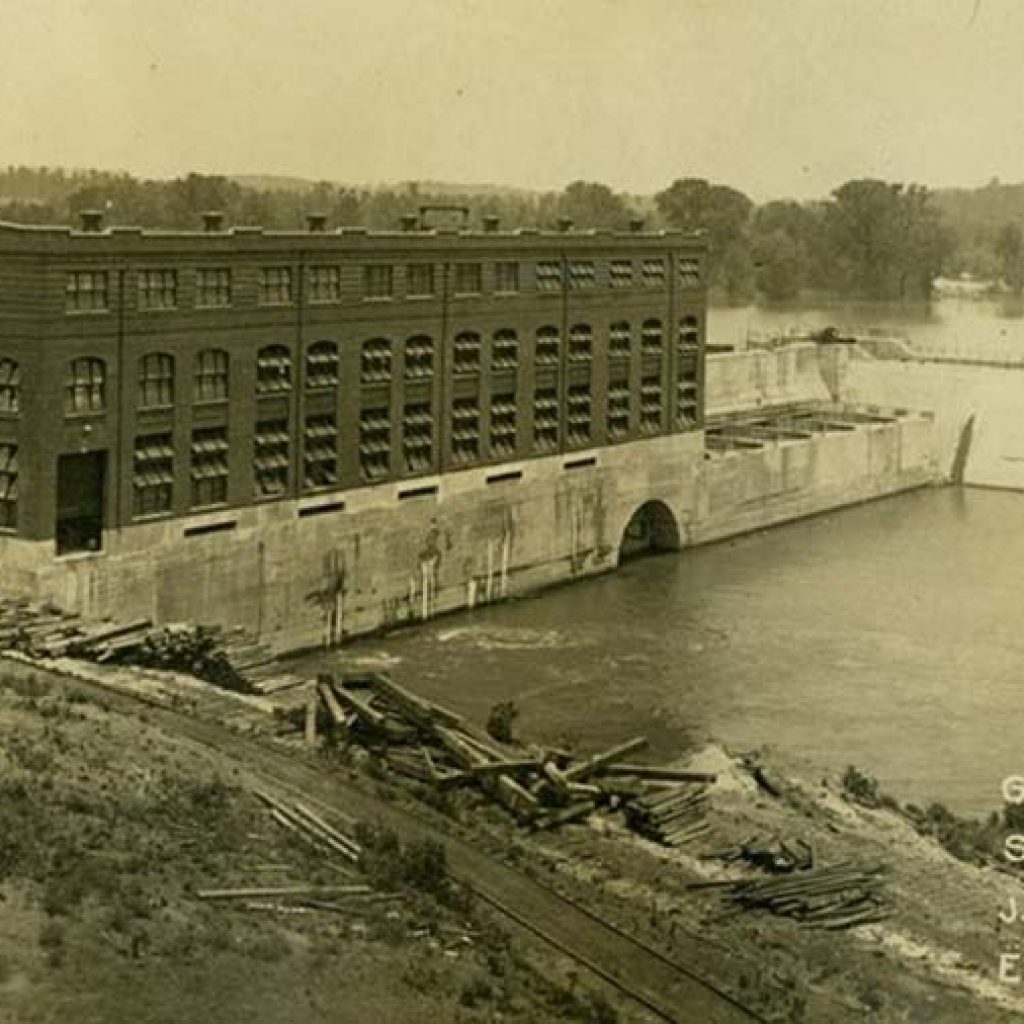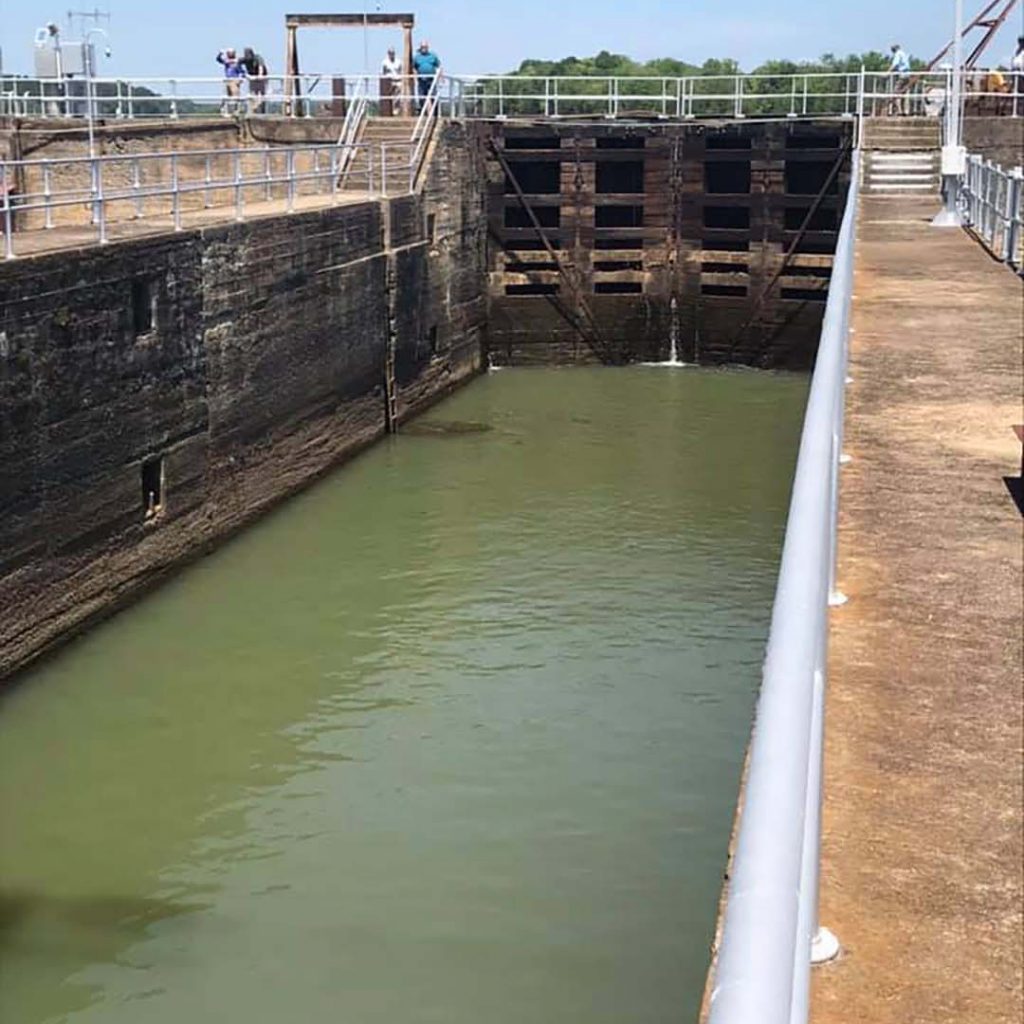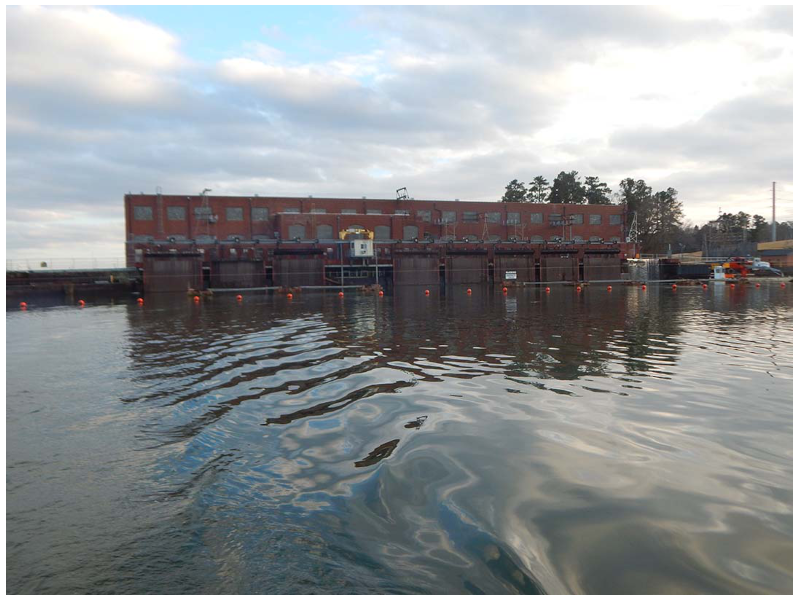Upgrades to the Savannah River’s oldest hydropower project will extend at least through May, along with lower water levels needed to accommodate the construction.
Contractors at Stevens Creek Dam are installing devices called “post-tensioned anchors” to strengthen the 107-year-old concrete dam and help it meet modern licensing standards, said Matt Long, a spokesman for Dominion Energy, the project’s owner.

Construction barges and equipment is stationed upstream of Stevens Creek Dam on the Savannah River, where crews are installing modern stabilization upgrades to the 107-year-old dam. Staff photo by Rob Pavey.
“Basically, they help stabilize the dam,” he said, noting that the project is in the process of renewing its Federal Energy Regulatory Commission license that was issued in 1995 and will expire Oct. 31, 2025.
The work began last summer and was scheduled to end in January, but a series of heavy rain events caused delays, Long said.
“We’ve had delays due to the sheer amount of water coming down the river,” he said. “It’s not always safe for contractors when the water is that high. So, a result, the work is now expected to finish in May.”

The Stevens Creek Hydroelectric Project – built from 1912 to 1914 – spans the Savannah River just below its confluence with Stevens Creek. The powerhouse is off Old Stevens Creek Road in Martinez; and its 2,000-foot-long spillway touches Edgefield and McCormick counties in South Carolina.
In addition to being one of the nation’s oldest continually operating hydroelectric projects, it also serves as a re-regulation facility for water released from Clarks Hill Dam, operated by the Army Corps of Engineers 12 miles upstream.
The interaction between the two dams is one of the most important water control functions on the entire river because it helps maintain stable water levels downstream – including in the Augusta Canal, the Augusta shoals and the river channel flowing through Augusta and North Augusta.

Clarks Hill Dam generates electricity for peak power demand, meaning its turbines may be idle much of the day, then release massive amounts of water to provide power that is more valuable. Stevens Creek, by comparison, releases a steady volume of water all day long.
The 2,200-acre reservoir upstream from Stevens Creek Dam can fluctuate as much as four feet every day, as it captures and holds the erratic surges from the bigger dam upstream and releases it slowly downstream.

Stevens Creek Dam’s powerhouse, photographed in 2020 when water levels were lowered for construction, stores surges of water released from Clarks Hill Dam 12 miles upstream and releases it slowly, which helps keep water levels stable downstream to Augusta.
This 2019 photo shows the obsolete and damaged metal “flashboards” atop the dam’s 2,000-foot spillway. They have since been replaced with modern versions that allow more water storage upstream and more efficient power generation.
Because of the construction at Stevens Creek Dam, the normal four-foot operating range can be about two feet lower than usual, leaving some docks and boat ramps temporarily unusable. Boaters and kayakers should use caution during low water, officials said.
The current project is the second major upgrade to Stevens Creek Dam in recent years.
In 2019, contractors launched a two-phase project to replace steel “flashboards” mounted atop the length of the dam’s spillway. The vertical gates allow more water to be stored in the upstream reservoir and can fold down during floods to release excess water more efficiently.
Web Resources:
Stevens Creek Dam project overview:
Stevens Creek Dam history and archaeology:
https://www.sceg.com/docs/librariesprovider5/default-document-library/stevens-creek-report.pdf
Real-time reservoir pool elevation gauge at Stevens Creek Dam:
https://waterdata.usgs.gov/ga/nwis/uv?site_no=0219648
Rob Pavey is the Outdoors contributor for The Augusta Press. Reach him at robbie.pavey@theaugustapress.com
[adrotate banner=”17″]












